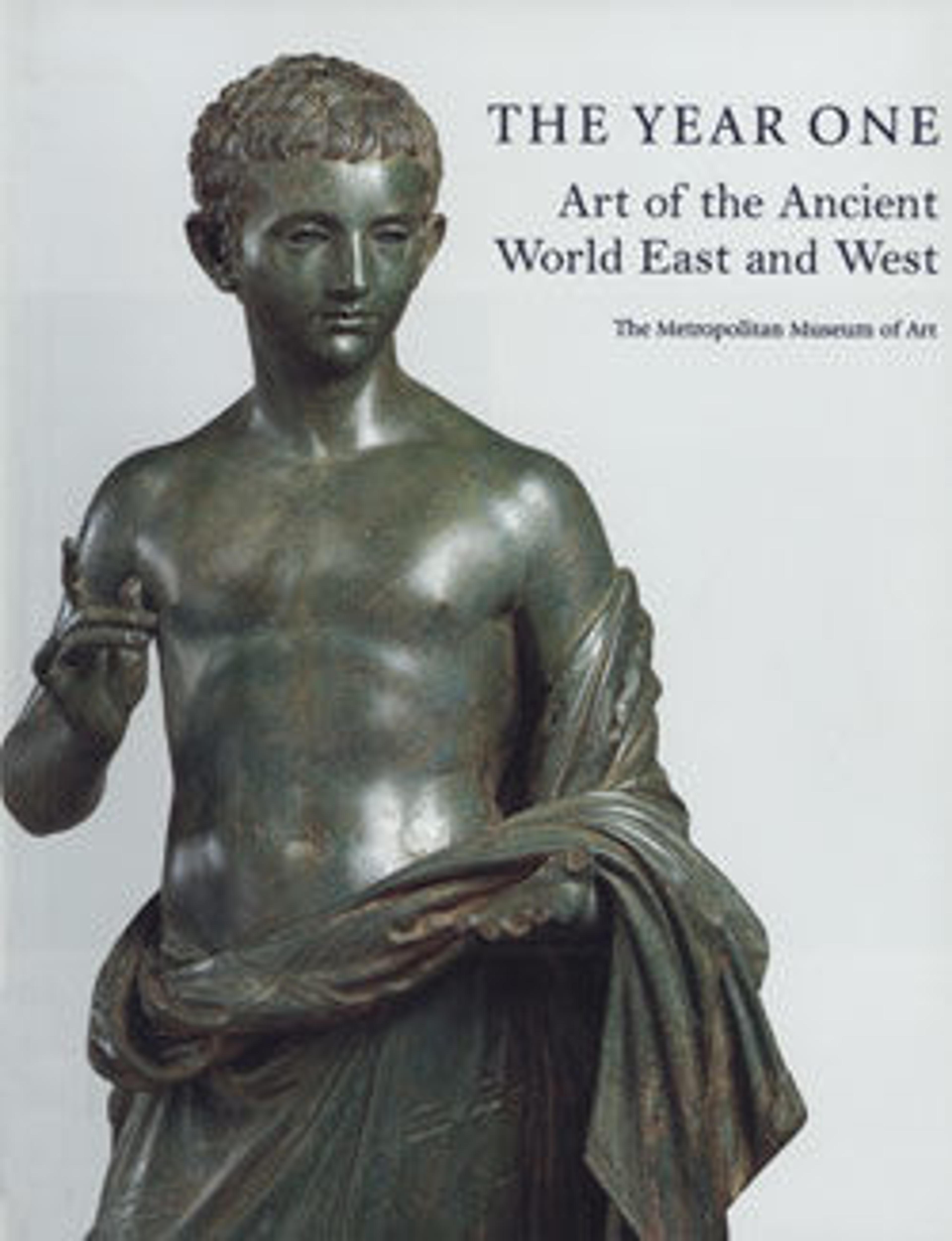Glass bowl
Translucent emerald green.
Short, outsplayed rim with beveled edge; carinated side, with two convex curves, the upper being shallow and the lower deep; slightly convex bottom within outsplayed base ring with flat edge.
Intact; pinprick bubbles; dulling, some pitting, and faint iridescent weathering.
Rotary grinding marks on interior, exterior, and bottom.
These small cast bowls are modeled in shape on Roman silverware and Arretine pottery. Likewise, the brilliant emerald green color appears to be an innovation of the Roman glass industry itself. This was probably based in Italy, although examples of such bowls, either in mosaic glass or in monochrome versions of both translucent and opaque glass, are found thoroughout the Roman world.
Short, outsplayed rim with beveled edge; carinated side, with two convex curves, the upper being shallow and the lower deep; slightly convex bottom within outsplayed base ring with flat edge.
Intact; pinprick bubbles; dulling, some pitting, and faint iridescent weathering.
Rotary grinding marks on interior, exterior, and bottom.
These small cast bowls are modeled in shape on Roman silverware and Arretine pottery. Likewise, the brilliant emerald green color appears to be an innovation of the Roman glass industry itself. This was probably based in Italy, although examples of such bowls, either in mosaic glass or in monochrome versions of both translucent and opaque glass, are found thoroughout the Roman world.
Artwork Details
- Title: Glass bowl
- Period: Early Imperial, Julio-Claudian
- Date: 1st half of 1st century CE
- Culture: Roman
- Medium: Glass; cast
- Dimensions: H. 2 1/8 in. (5.4 cm); diameter 4 3/4 in. (12 cm)
- Classification: Glass
- Credit Line: Gift of Henry G. Marquand, 1881
- Object Number: 81.10.128
- Curatorial Department: Greek and Roman Art
More Artwork
Research Resources
The Met provides unparalleled resources for research and welcomes an international community of students and scholars. The Met's Open Access API is where creators and researchers can connect to the The Met collection. Open Access data and public domain images are available for unrestricted commercial and noncommercial use without permission or fee.
To request images under copyright and other restrictions, please use this Image Request form.
Feedback
We continue to research and examine historical and cultural context for objects in The Met collection. If you have comments or questions about this object record, please contact us using the form below. The Museum looks forward to receiving your comments.
